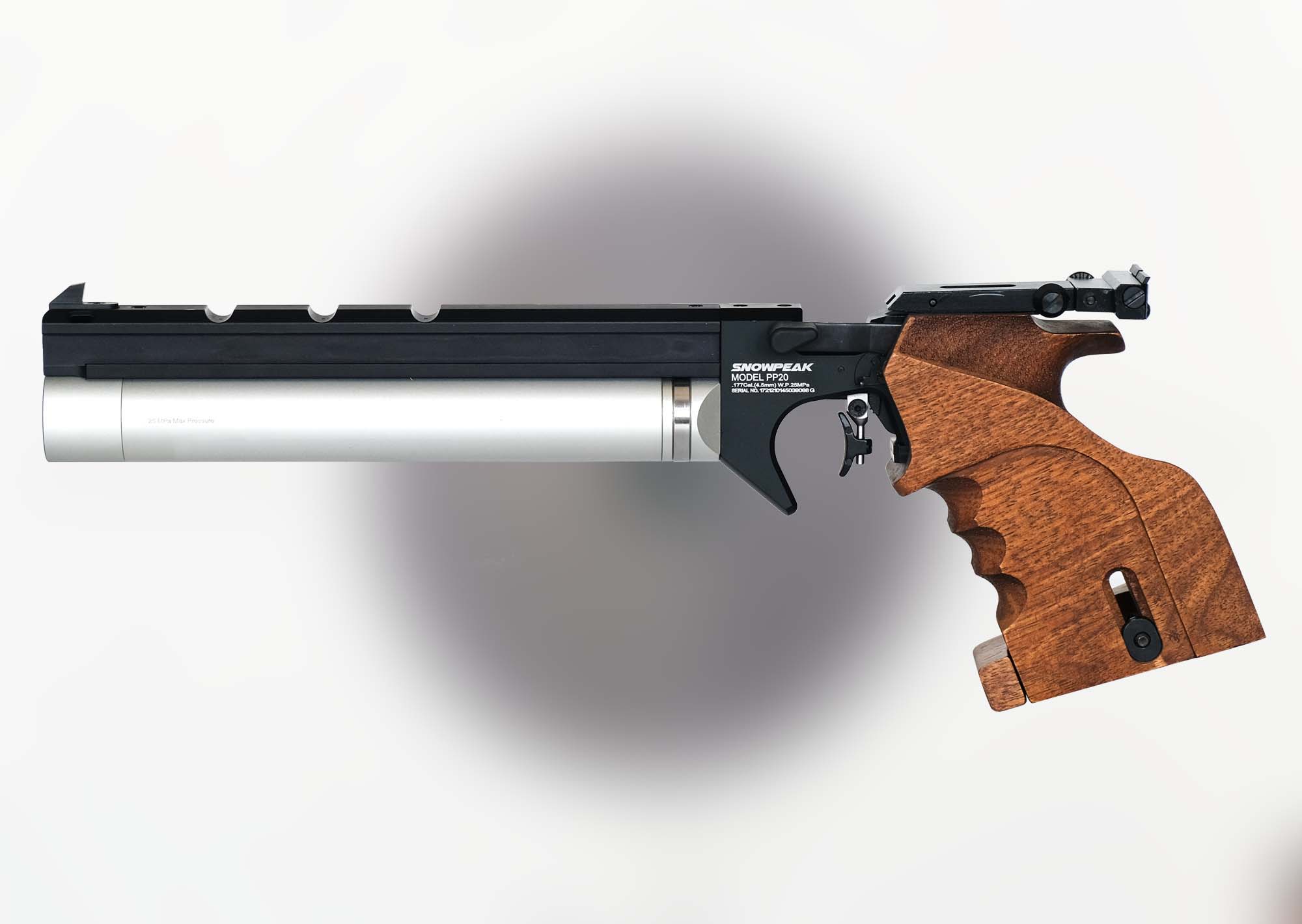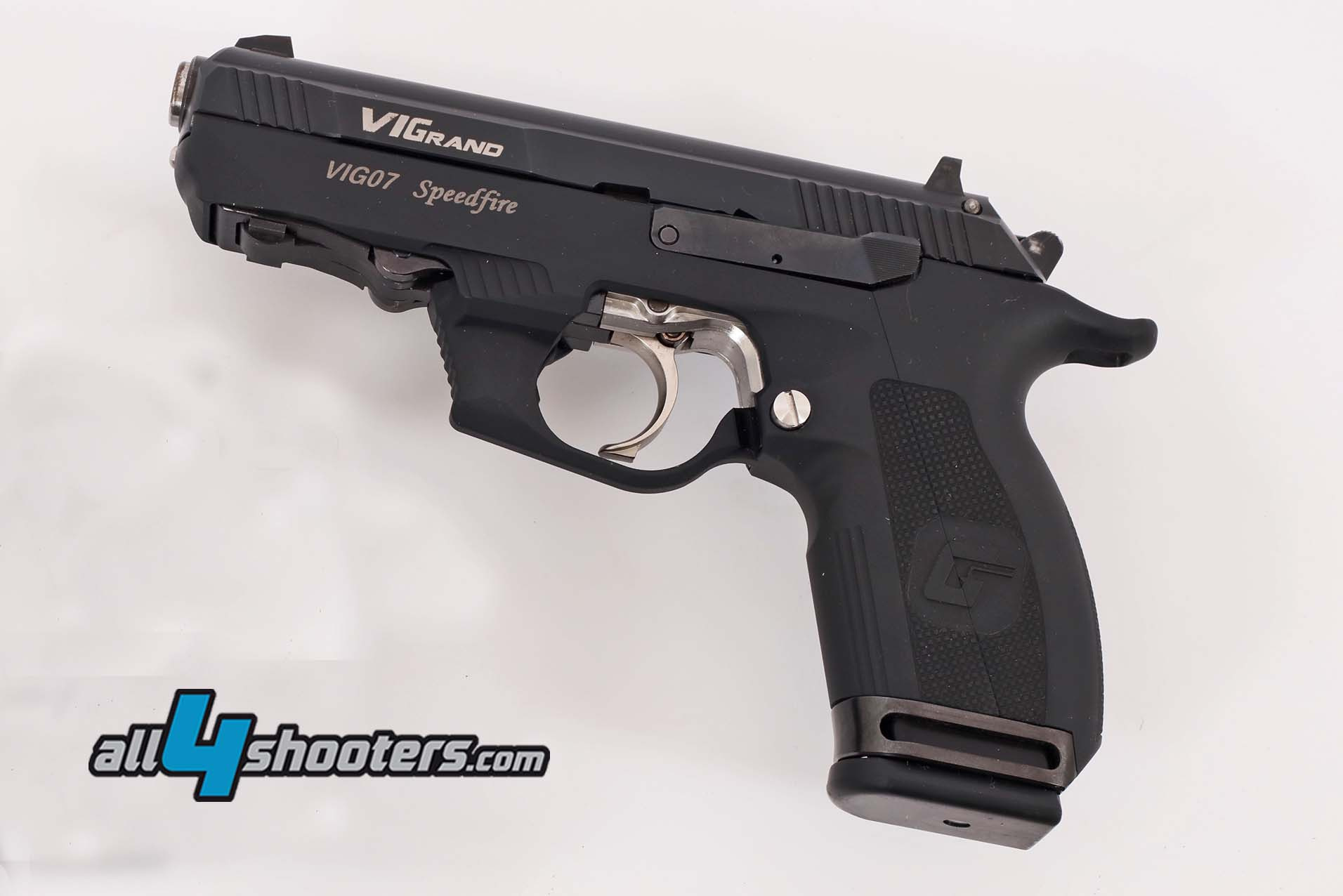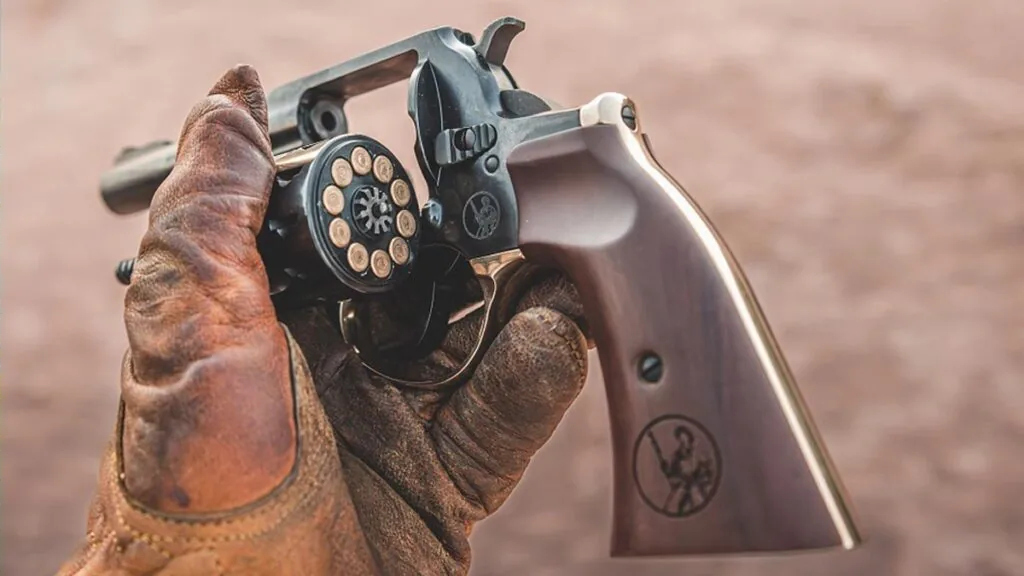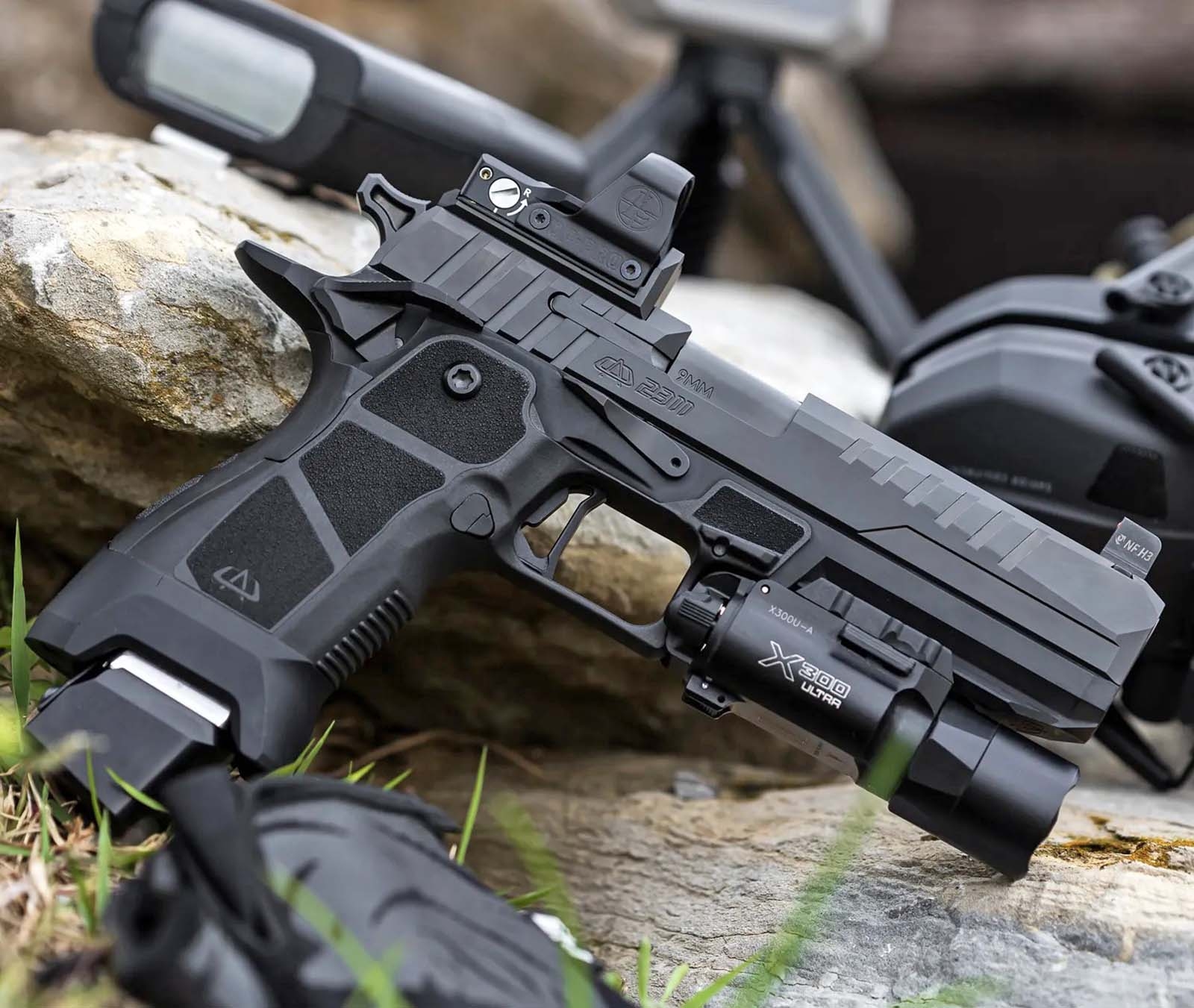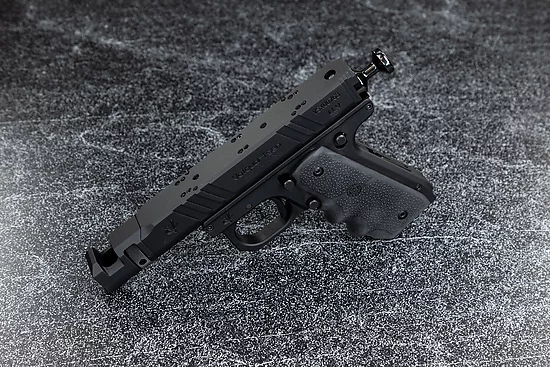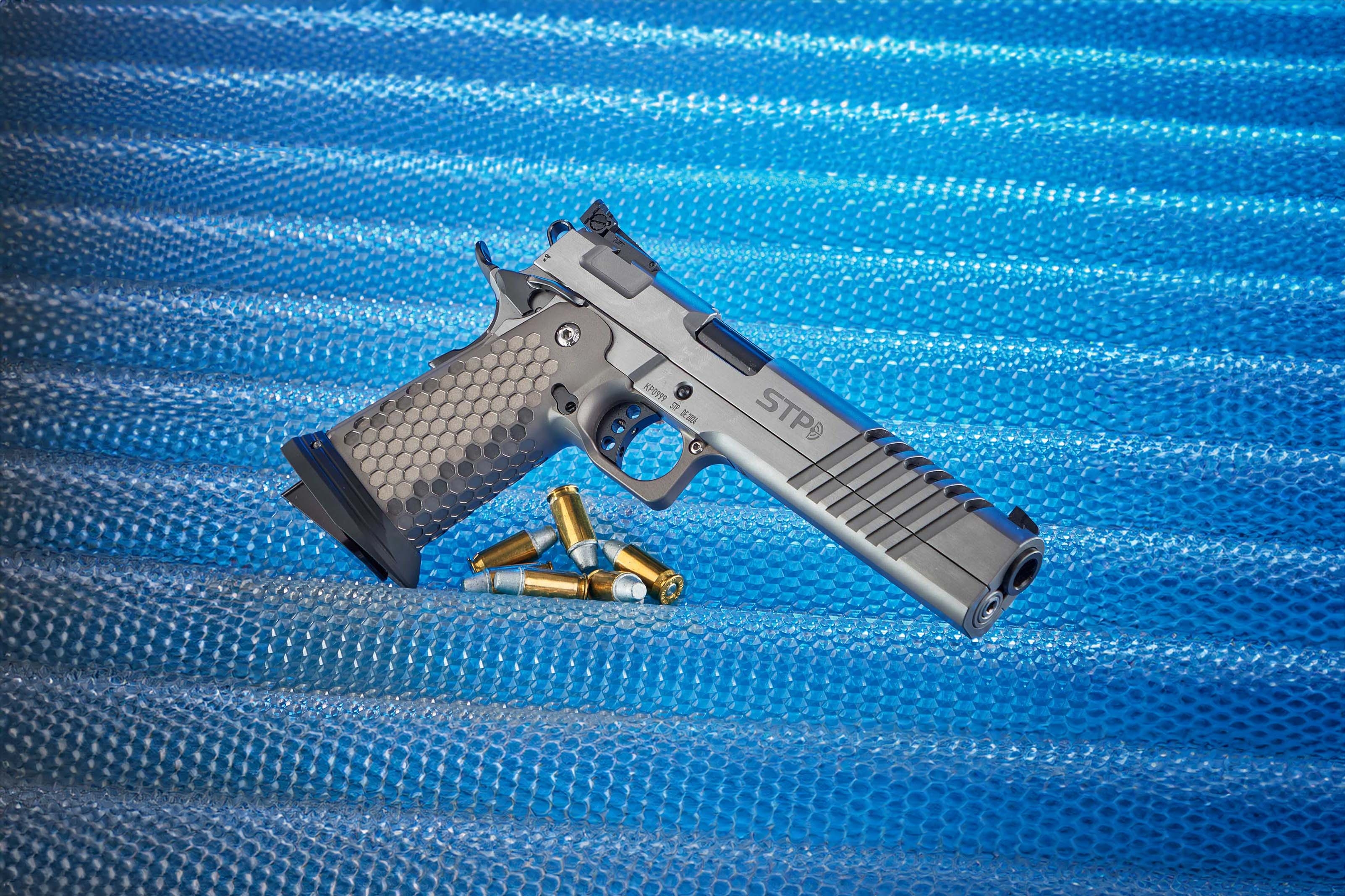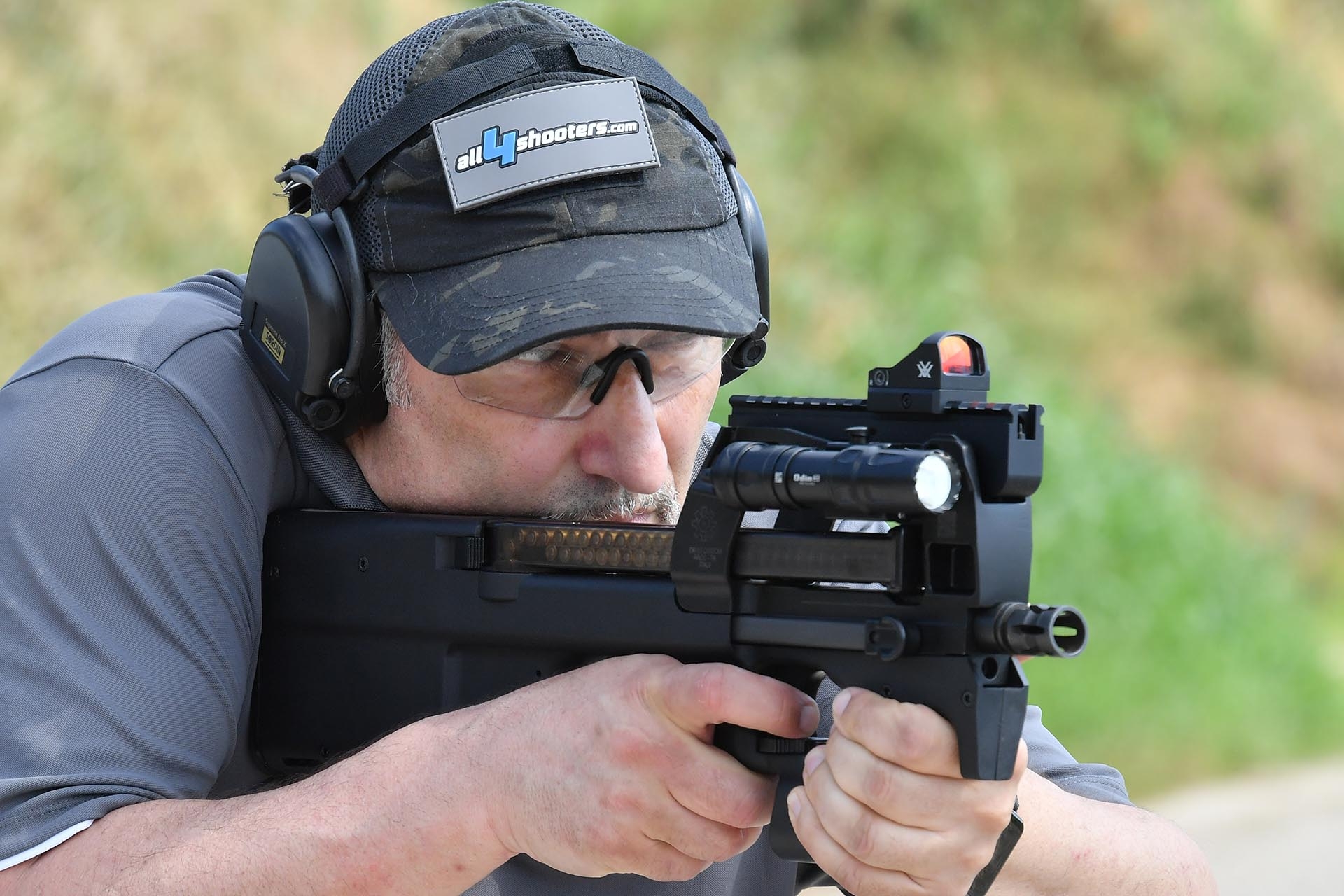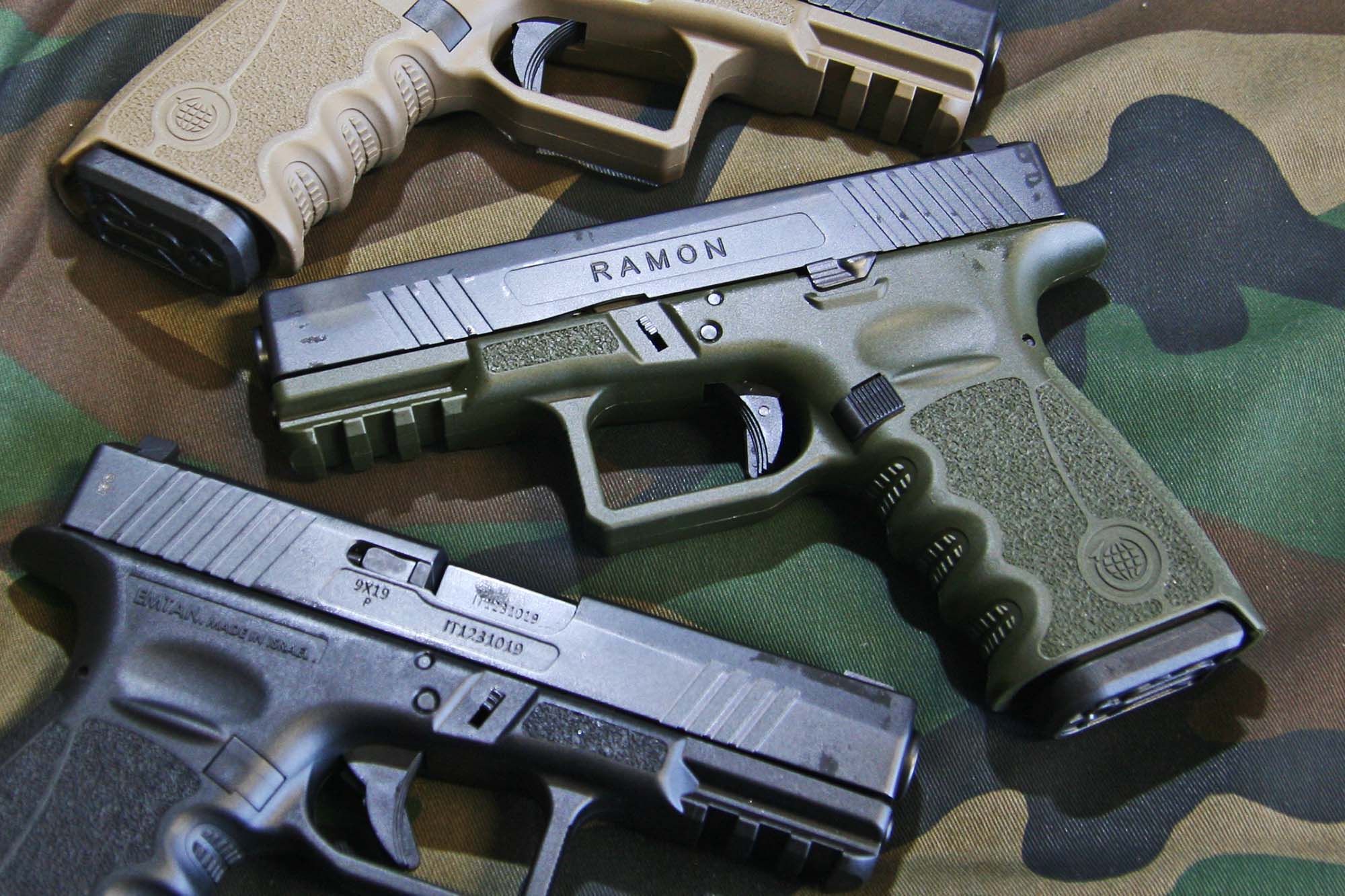Sport pistol is the name of the five-shot competition handgun used by women at the Olympics and regularly carried to the shooting range by thousands of (mostly male) shooters worldwide. These pistols are mostly in .22 Long Rifle caliber, but also often in the smallest match-ready .32 S&W Long Wadcutter centerfire cartridge. Other centerfire calibers such as .38 Special have not been used for years.
Otherwise, there are few individual characteristics that the rulebook would allow. Theoretically, it also allows revolvers, but they are negligible, at least in professional sports and in this article, because the shooter would have to compensate for too many disadvantages (such as the high barrel axis, recoil behavior, or cocking the single-action hammer with the other hand because of the molded grip). A rimfire sport pistol can also be used for two other disciplines that are also internationally represented: Olympic Rapid Fire Pistol and Standard Pistol.
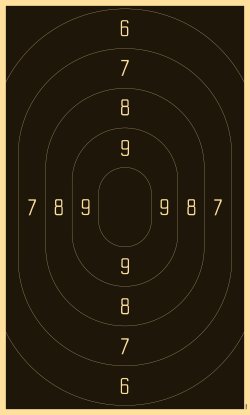
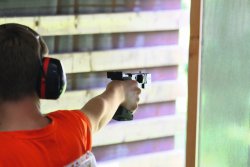
However, the dimensions and weights specified by the ISSF world federation have been making the heads of gun designers spin since their introduction in the early 1960s. Initially, the external dimensions defined by the rules and regulations ensured that it was always a compromise design: if the barrel utilizes the maximum length of 153 mm (6 inches) for the sake of top accuracy, there is little room left at the other end for a molded grip that provides a secure hold even for large hands. Since the debut of the Walther GSP in the 1960s, the magazine has been located in front of the trigger between the chamber and the grip. Until then, people all over the world had been shooting with models modified from standard handguns and then used as sport pistols: for example, the Hämmerli 108 and 208, the FN International or 150 models, the High Standard range, with the Smith & Wesson 41, the Ruger MK II or Colt's Woodsman and Ace models.
All sporting pistols had one thing in common: the magazine was in the grip. This saved space and was convenient for cartridge feeding. However, it did not allow the grip angle to be changed, which is necessary for top target scores depending on hand size and shooting technique. And if you had too small hands and short fingers anyway, you had to struggle, virtually around the magazine and frame, to get to the trigger blade. So what to do? Move the magazine forward, as on the old C96 military pistol, and allow for an adjustable grip. That, in turn, often comes at the expense of barrel length, but that wasn't such a tragedy until targets were changed in the mid-1990s. The original GSP offered a barrel length of only 115 mm and thus only mediocre accuracy. With the oval ten of the rapid fire target (15 cm high, 10 cm wide), which was common at that time, this was enough. Today's targets have a round ten of 10 cm in diameter. And in the final, only shots scoring 10.0 or more count in a tenth-ring score – in sport pistol, the ladies even have to hit at least a 10.2 for it not to count as a miss. So suddenly, due to this new target change, accuracy played a greater role after all.
Three disciplines with the same competition pistol

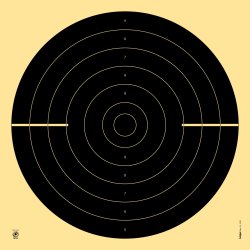
The course of fire for sport pistol according to the international ISSF, whether with rimfire or centerfire calibers, includes two parts shot at 25 meters. First, six times five shots in six minutes each on the precision target. Once this first half has been completed, shooting continues (usually in the afternoon or the next day) with rapid fire on the target with the somewhat more opulent black center. Here, there are only three seconds per shot (again, 6 x 5 shots), and the holding hand must return to the "ready" posture, tilted downward at least 45 degrees, before each shot. Both half scores are added together. And in major competitions, a final shootout of the top eight starters from the qualifiers follows. All start again from zero, regardless of perhaps high pre-competition ring scores. Here you need stamina, nerves and a lot of ammo: it's all about hit or miss, the worst shooters are eliminated one by one. A maximum of seven series of five shooters are eliminated before the last two decide on gold and silver – after all, 50 more stressful competition shots after the 60-shot main program. (Update for April 2022: for the 2024 Olympics in Paris, other finals procedures have just been decided by the ISSF and IOC, which have not even been tested yet.)
In rapid fire pistol, six series of five are also shot twice, but on five targets standing next to each other. The standard pistol is a fast precision shooting over 30 or 60 rounds, with five-shot series in first 150, then 20 and finally 10 seconds.A sport pistol must be put into a wooden or plastic test box – internal dimensions: 300 x 150 x 50 mm. If the plexiglass lid closes, there is the coveted approval sticker. Depending on the design and the angle of insertion, the box test allows a few millimeters more here and there.
Sport pistols once and now: the top models from Walther, Pardini, Erma, Feinwerkbau and Hämmerli in comparison
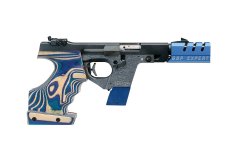
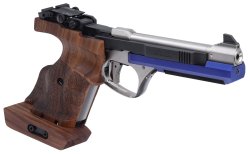
In terms of numbers, at any rate the Walther GSP, today known as the GSP Expert variant, is likely to be one of the most widely built sporting guns in the world, with nearly 150,000 made in .22 LR and .32 S&W Wadcutter calibers. At the very least, the GSP, like its somewhat older sister OSP (first introduced in 1961), established a new family of handguns: hybrid pistols in modular design. This was because, like the GSP, it was possible to change the upper part of the bolt on the OSP and shoot rimfire or centerfire ammo with the same grip and identical trigger. This saved money. Those who initially purchased a .32-caliber pistol could add the "smaller" .22 caliber as a conversion kit. There were, however, only a few of such hybrid pistols: besides the GSP, the Hämmerli 280 and the Erma ESP 85A. The latter two are no longer in production, while the GSP was replaced by the Walther SSP, which exists only as a .22 pistol and has exotic status. Other manufacturers spared themselves the adjustments necessitated by the caliber change, preferring to build separate models in each caliber. Among competitive shooters, the purchase of two different pistols also seems to have proven successful.
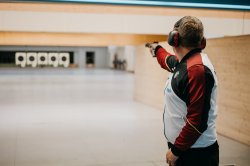
After evaluating the rankings, there is little doubt about the market leadership among sport pistol manufacturers: with pistols from the Italian Pardini company from Lido Di Camaiore, founded by former top Italian shooter Giampiero Pardini, the winners have been collecting medals and titles for years. Not only with the sport pistol, but also with the Olympic rapid fire pistol. This is because after the 2004 Olympics, the International Shooting Sport Federation (ISSF) decided to unify the sport pistol (SP) and rapid fire pistol (OSP) gun types. At that time, the OSP was contested in the weak .22 Short caliber. There were grips enclosing the hand and relief holes at the muzzle – all in all quite expensive special firearms. From then on, all rimfire handgun disciplines (at least in the ISSF) were to be completed with the standard .22 LR cartridge, in the hope of attracting more young shooters. This remained only a wish, also because internationally the OSP was still attributed to the men and the sport pistol only to the women. Such things can happen when theorists set the rules.
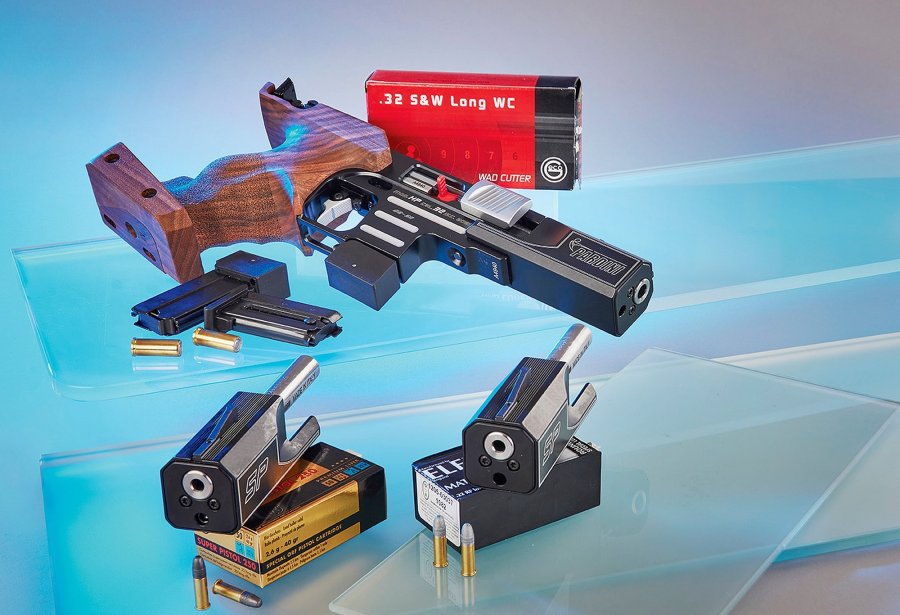
What features does a good sport pistol actually need?
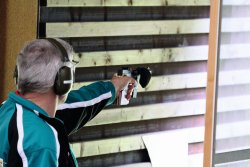
What is the "ideal" semi-auto pistol, good for rimfire sport shooting, standard and rapid fire pistol? Maximum 1400 grams in weight and within the permissible a barrel length that allows for groupings under 25 mm from a clamped gun. Feasible, as many tests by our colleagues at VISIER proved, not only with the Pardini SP. In addition, the barrel axis must be quite low above the holding hand to avoid a tilting moment when firing and to better absorb recoil. It also helps to capture the sights position and detect aiming or holding errors. Whereas previously only tool-adjustable rear sights were allowed, tiny knurled screws that can be turned by hand are now acceptable. The sight radius can be a maximum of 220 mm long. Otherwise, sport pistol sights consist of an open rear sight and a post front sight – the rectangular edges of which can best be seen with a little white space against the center of the precision target. With the larger rapid fire target, you can hardly aim into the white area below – here you shoot right into the center. So that you don't miss the center on the way up from the bottom, two white aiming lines are printed on the sides at the height of the ten – these are also on the electronic target, by the way, where the shooter otherwise actually only shoots through a black hole (here a fine network of infrared light beams detects the bullets, measuring their position and thus the ring value to the tenth). For pistol owners, therefore, either a rigorous elevation correction on the rear sight would be necessary when switching from the first half-program precision to rapid fire, or this can be solved more elegantly by using a rear sight that is already adjusted for rapid fire (this is possible with the Walther SSP, for example). Other shooters, on the other hand, swear by a folding rear sight from the range of accessories, which can be lowered when changing.
What grip shape should a match sport pistol have?
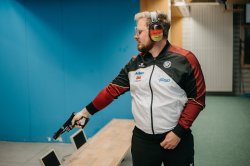
All three ISSF disciplines – sport pistol, standard pistol and rapid fire pistol – are shot with one hand. Orthopedic grips with hand rests are therefore common here. The thumb points in the direction of firing, which prevents the grip from pressing too hard on the wood and jerking unintentionally. If you have a custom grip made according to the outline of your hand (costs: around 325 euros, for example at Rink Grips), you should bear in mind that the hand swells or shrinks depending on the outside temperature. Good grip carvers point to this during the necessary adjustment on site. Since the magazine no longer interferes with the grip angle, angles between the barrel bore and grip axis of 110 to 115 degrees have proven suitable for most. So the grip is "steeper" than, say, an air pistol or a free pistol (around 120 degrees). Here, however, the position can be readjusted in seconds using a hexagonal wrench.
The trigger is the Achilles' heel: what still separates a good aiming position and a steady arm from a ten is the trigger mechanism. The trigger must weigh at least 1,000 grams, and you can distribute the value between take-up and the wall. Top shooters overcome the take-up (usually between 600 and 800 grams) already on the way from the ready position to the holding area. There they stand directly at the trigger wall without any visible finger movement and, after overcoming the remaining grams, can release without the gun moving unintentionally. But therein lies the art – inexperienced shooters still pull the trigger while already circling around in the aiming space (as long as the trigger finger moves, the sights do not remain still either).
This may still work with the precision half, but it is not without reason that a match is decided by a rapid fire stage. Results close to the maximum, i.e. from 295 of 300 possible points, are achieved here by the best. Every nine or eight is a nuisance. It goes without saying that modern sport pistols can be fine-tuned to achieve a finely tuned trigger action. All too often, however, it fails during the gun check because the minimum value has been adjusted too tightly and the attached test weight releases too early. So a little more resistance does not bother and gives more safety even before the competition. Finally,in don't forget one thing about shooting with rimfire or centerfire pistols: it's simply fun, because you can achieve quite high results relatively quickly (for example, over 285 points in the half program). For the absolute top, on the other hand, you need extensive training, but the basic skills are retained for a long time.
UPDATE: Walther's new GSP500 in .22 LR and .32 S&W Long WC
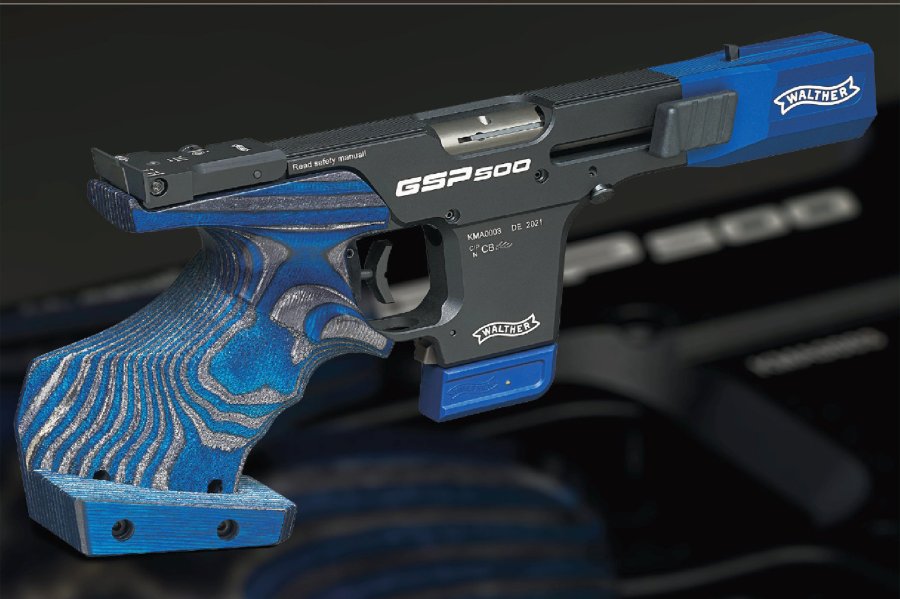
With the Walther GSP, introduced in 1969 and built in over 150,000 examples to date, the Ulm-based company set the bar for sporting pistols for decades, in both rimfire and centerfire calibers. The innovative Walther SSP failed to catch on because its operation was too complicated and distracted too much of the shooter's concentration on the technology. At IWA 2022, however, Walther announced that there is a true successor to the GSP: The new Walther GSP500 again comes in two versions (.22 long rifle for 2,399 euros and .32 S&W Long WC for 2,699 euros). The GSP500 replaces the GSP Expert, but also the Walther SSP, both can certainly still be found in stores for a while in remaining stocks, but they are already no longer on the website.
We at all4shooters.com have already featured the Walther GSP500 in a separate article at IWA 2022 – a detailed review of both pistols will follow here shortly.



